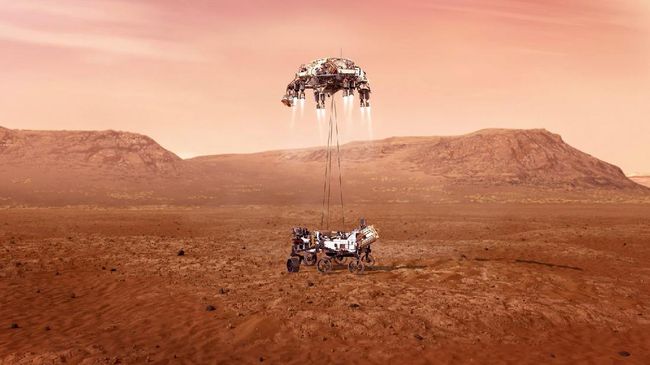Jakarta, CNN Indonesia —
United States Aeronautics and Space Administration (NASA) found evidence of planets Mars experience climate change for decades as a result of a massive volcanic eruption in the northern region called Arabia Terra about 4 billion years ago.
Scientists say the volcanic eruption was so powerful that it could release large amounts of dust and toxic gases into the Martian air. The eruption’s impact blocked sunlight and changed the climate on Mars for decades.
The prediction was presented in a paper published in the journal Geophysical Research Letters in July.
Geologist at NASA’s Goddard Space Flight Center, Patrick Whelley, said he and his colleagues were modeling the Martian climate to understand the impact of the cataclysmic eruption. He is the researcher who led the analysis of the Arabia Terra region.
“Each of these eruptions will have a significant climatic impact, perhaps the gases being released make the atmosphere thicker or block the Sun and make the atmosphere cooler,” Whelley said. page NASA official.
After an eruption ejects molten rock and gas and scatters thick volcanic ash for thousands of miles from the eruption site, a volcano of this size collapses into a giant hole called a “caldera”.
Researchers looked at seven calderas on Arabia Terra on Mars that were thought to have originally been volcanoes. The team examined the ash trails left by the ancient eruption and managed to find them.
The team led by Whelley used images from MRO’s Compact Reconnaissance Imaging Spectrometer to identify minerals on the Martian surface. They searched for traces of the volcanic eruption in canyon walls and craters from hundreds to thousands of miles from the caldera.
They believe the volcanic ash from the eruption will be carried by the wind. They identified volcanic minerals that turn into clay, including montmorillonite, imogolite and allophane.
The research team also used images from the MRO camera to create a three-dimensional topographic map of Arabia Terra.
By laying out mineral data on top of the analyzed canyon and crater topographic maps, the researchers were able to predict mineral-rich deposits and see well-preserved ash layers.
As reported CNET, data on the volcanic history of Mars will keep many scientists busy as they find out what impact the supereruption had on the red planet.
In addition, the question arises as to why Arabia Terra is the only place on Mars that appears to be home to an active volcano.
“People will read our paper and say, ‘How? How could Mars do that? How could such a small planet melt enough rock to drive thousands of super-eruptions in one location?” said NASA Goddard geologist Jacob Richardson, who worked with Whelley.
(lnn/ayp)
– .


